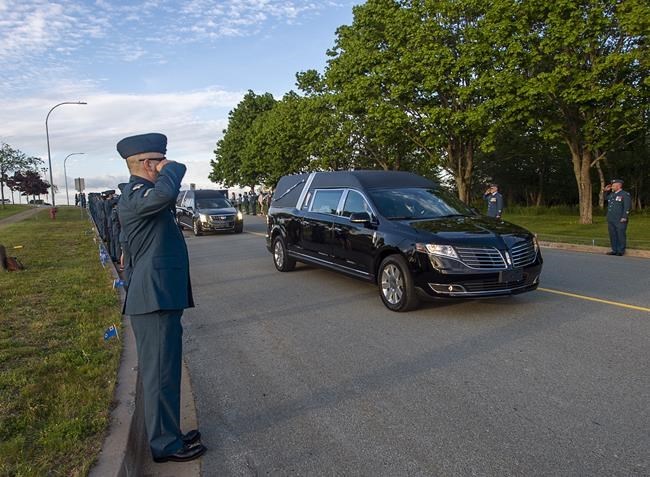OTTAWA — A military investigation has found that an autopilot issue played a major role in the deadly crash of a Cyclone helicopter off the coast of Greece last year.
As a pilot guided the naval helicopter into a tight turn, a built-in autopilot took control and sent the aircraft into the Ionian Sea, killing all six personnel on board. The process played out even though the pilot received no training or cockpit indicators to warn of how the automation system would respond in that "very specific" circumstance, the Defence Department said in a release.
The crash of the Stalker 22 on April 29, 2020, caused the worst single-day loss of life for the Canadian Armed Forces since six soldiers were killed in a roadside bombing in Afghanistan on July 4, 2007.
It marked the third incident involving a Cyclone, with defective software blamed for one of the helicopters' suddenly dropping several hundred feet during a test flight in 2017. Another had a "hard landing" on a ship in February 2019.
Several restrictions were placed on the helicopters after the 2017 incident forbidding crews from performing certain manoeuvres.
The report lists several recommendations, including the need to fill in gaps in flight training manuals, modify flight control software and establish a working group to review operational requirements around complex turning manoeuvres for the CH-148 Cyclone.
The Cyclones are typically deployed on board Canadian frigates and used for search and rescue, surveillance and anti-submarine warfare.
Master Cpl. Matthew Cousins, Sub-Lt. Abbigail Cowbrough, Capt. Kevin Hagen, Capt. Brenden MacDonald, Capt. Maxime Miron-Morin and Sub-Lt. Matthew Pyke died in the crash near their ship, the HMCS Fredericton.
The report says the aircraft's certification did not include testing of what would happen if a pilot overrode the autopilot more than “momentarily” while making a tight turn to land on the flight deck in a "final complex" manoeuvre.
The helicopter's autopilot, or "flight director," was not intended to be overridden for extended periods, the report indicates, despite the fact that pilots "regularly" overrode the system without manually pressing a button on their control stick, called the cyclic.
The software issue was a key cause, but not the only one, said Brig.-Gen. John Alexander, the flight safety director at the Royal Canadian Air Force who authored the report.
"This accident was not the result of one single causal factor, but a combination of several and could have happened to any other crew on any other day," he said in a statement.
Flying publications contained information that may have been "confusing or misleading," included "incomplete" sections on automation and lacked manoeuvre descriptions essential for use in the field, the report states.
The autopilot response was "unknown to the manufacturer, airworthiness authorities, and aircrew prior to the accident," Alexander said.
His report follows one from Canadian Armed Forces board of inquiry and obtained by The Canadian Press that made six recommendations. Five involved better training for pilots to make them aware of the potential problems that could occur if they override the autopilot.
It also recommended creating special cockpit signals pilots could use to warn each other about overriding flight directors for extended periods of time. However, that suggestion is not shared in the more recent analysis from the flight safety directorate.
The new report says pilots must be well trained to almost instantly press a single button on their control stick to disengage the autopilot if they're not getting the response they want out of their controls. But automatically disengaging the autopilot might pose its own risks in some situations, especially when a pilot believes the autopilot will keep functioning, according to the study.
The report instead argues that the software — and its "accumulation of these biases"— needs to be addressed by Connecticut-based Sikorsky Aircraft, the century-old manufacturer of the Cyclone.
Constant alertness is another recommendation.
"Crews must guard against complacency by remaining mentally engaged in flight operations and employ standardized operating procedures," Alexander said in the report summary, stating that "ineffective" crew resource management contributed to the crash.
"The investigation could not determine why the crew did not decouple the (flight director) during the accident manoeuvre as they had during the first (return-to-target) manoeuvre."
Maj.-Gen. Eric Kenny said the air force has begun to implement the recommendations and remains "fully confident in the aircraft’s cutting-edge capabilities and those who fly and maintain them every day."
A stone monument was unveiled on the first anniversary of the crash, with a black granite, six-faced memorial now standing at the entrance of Canadian Forces Base Shearwater in Nova Scotia.
This report by The Canadian Press was first published June 28, 2021.
Christopher Reynolds, The Canadian Press



